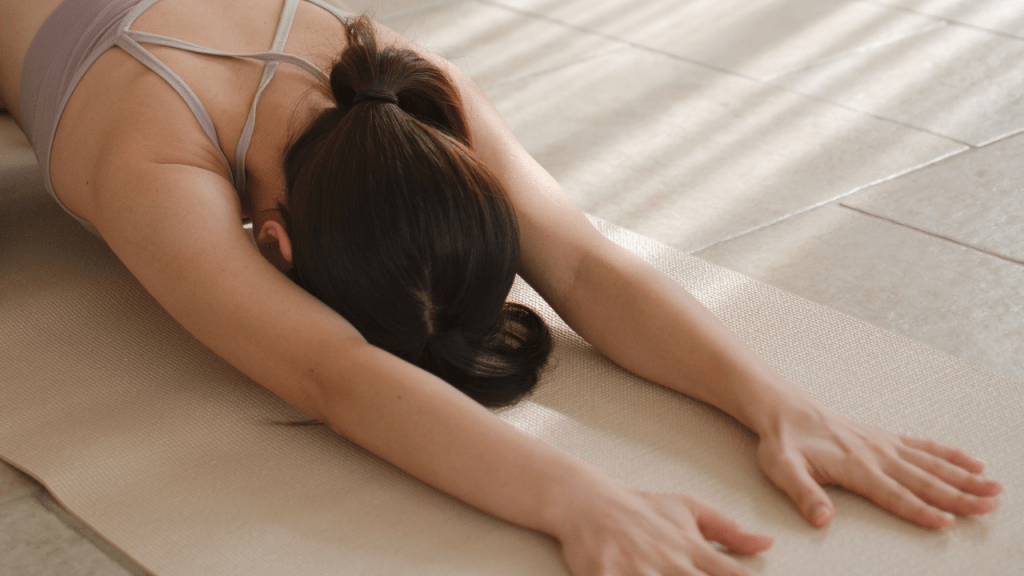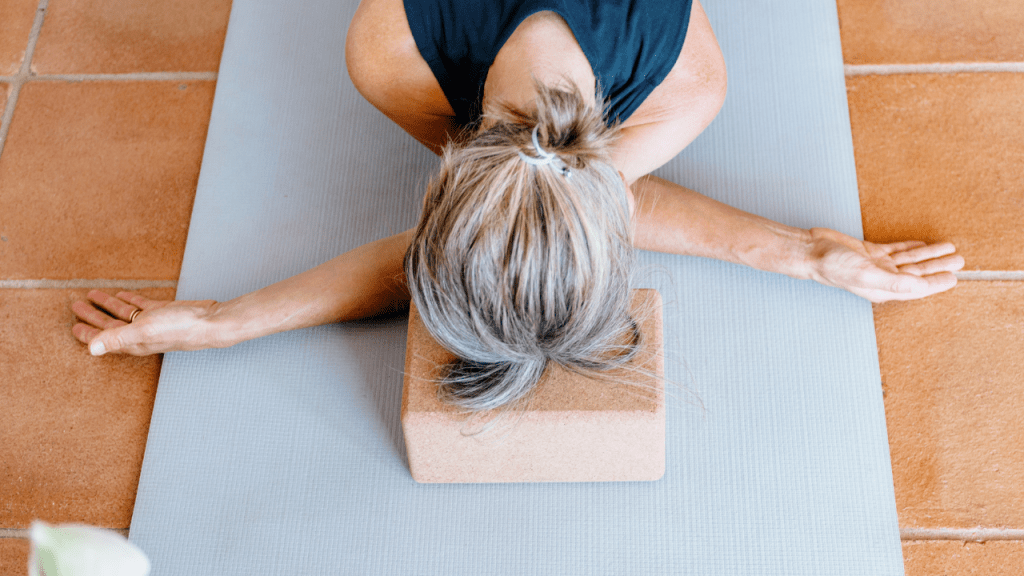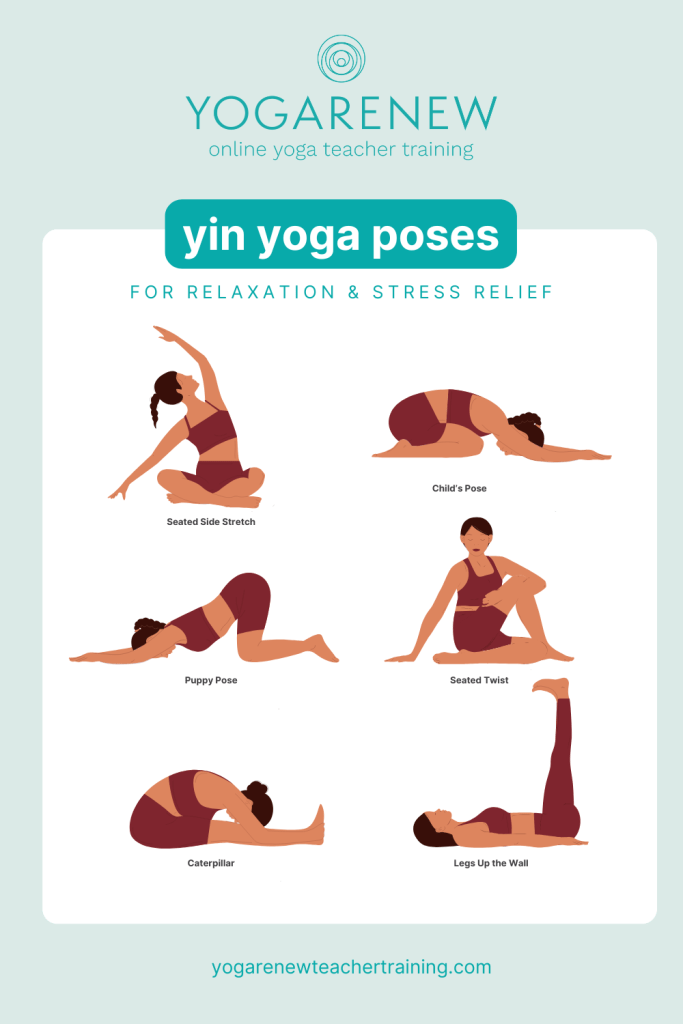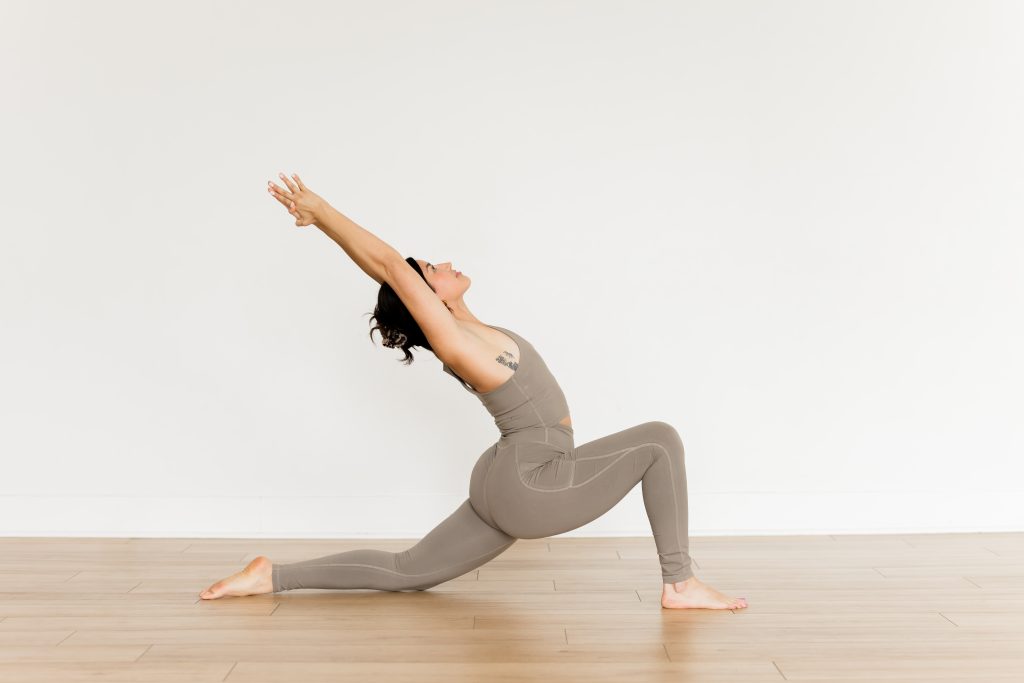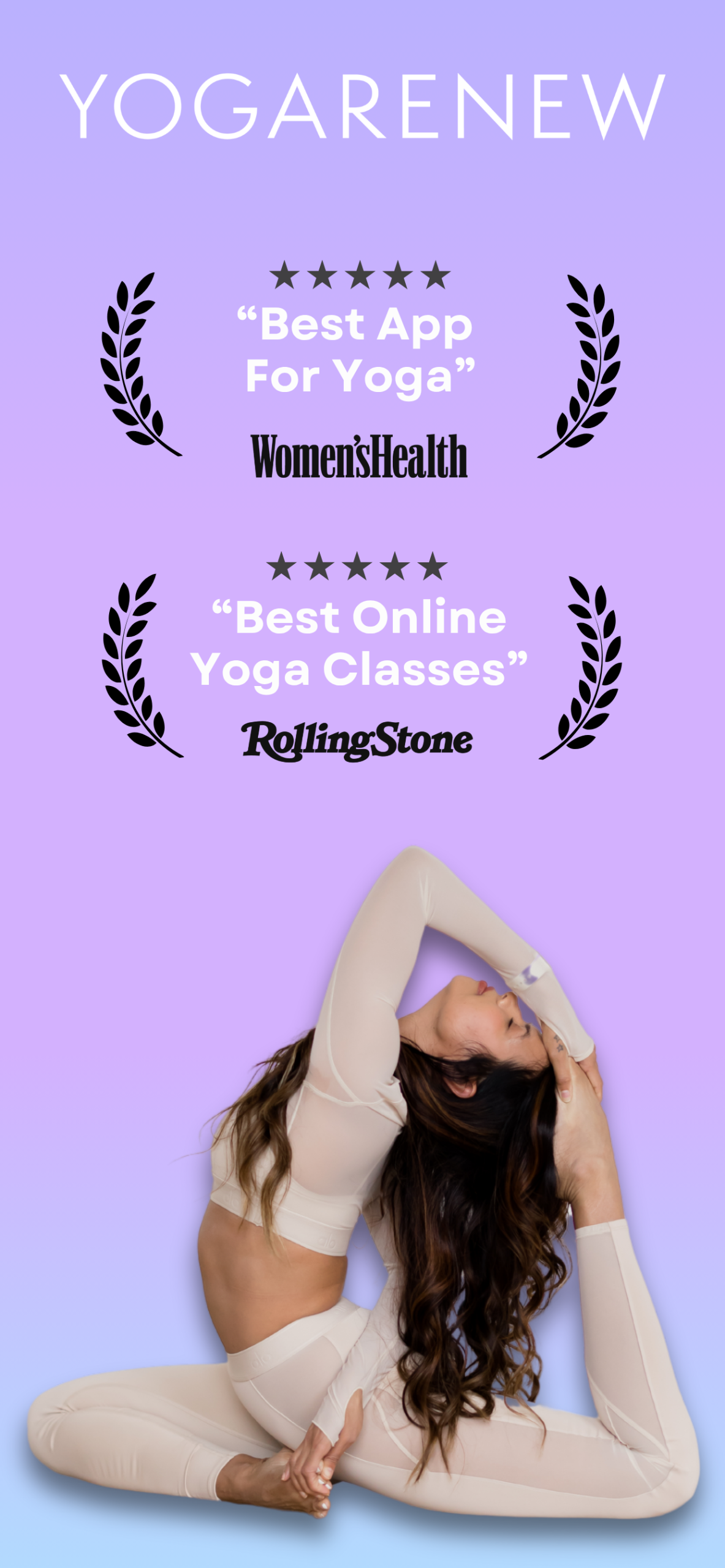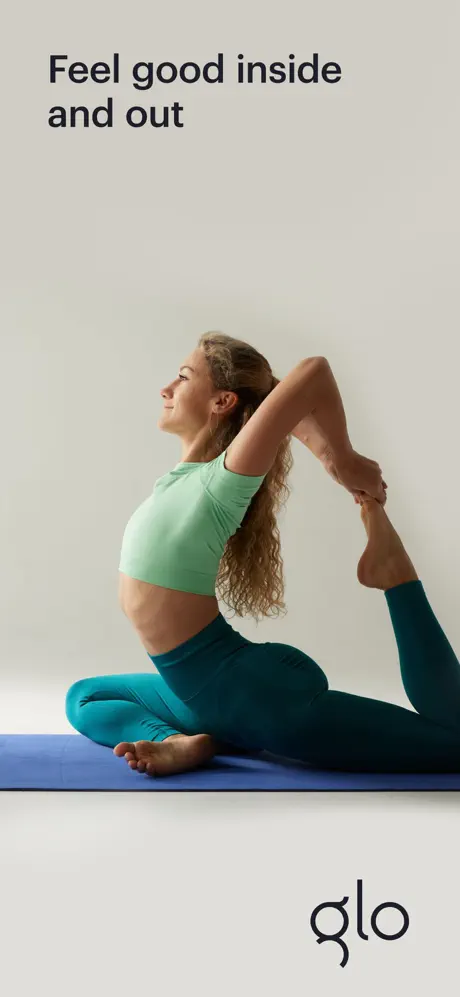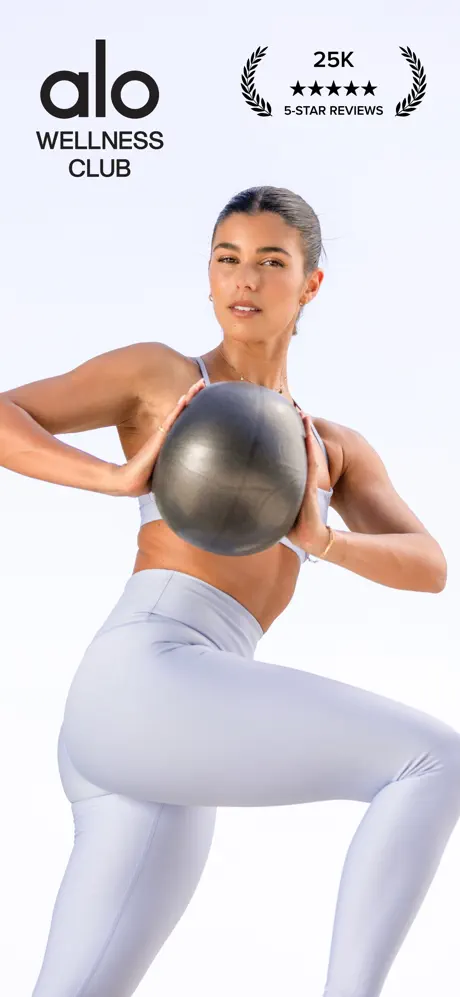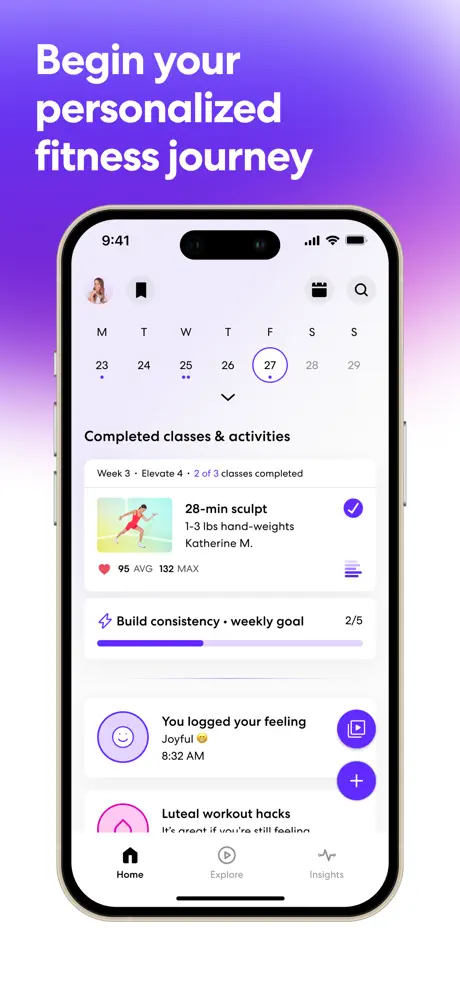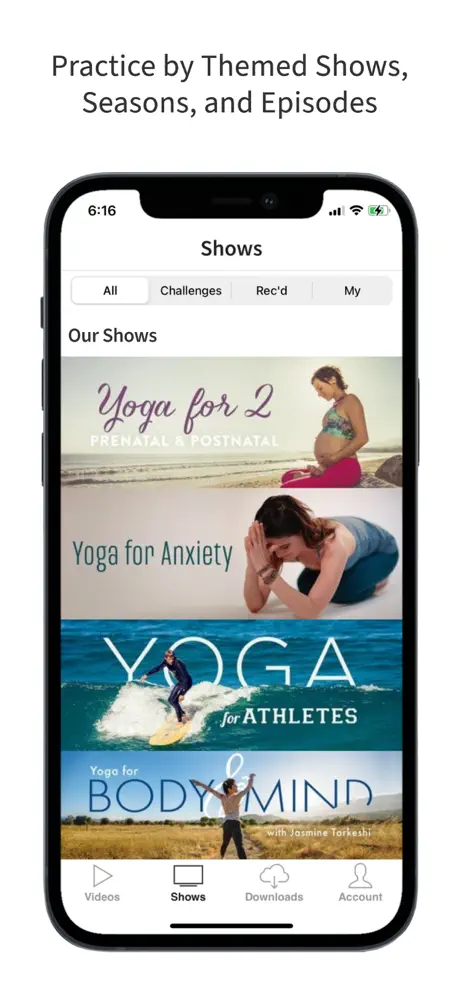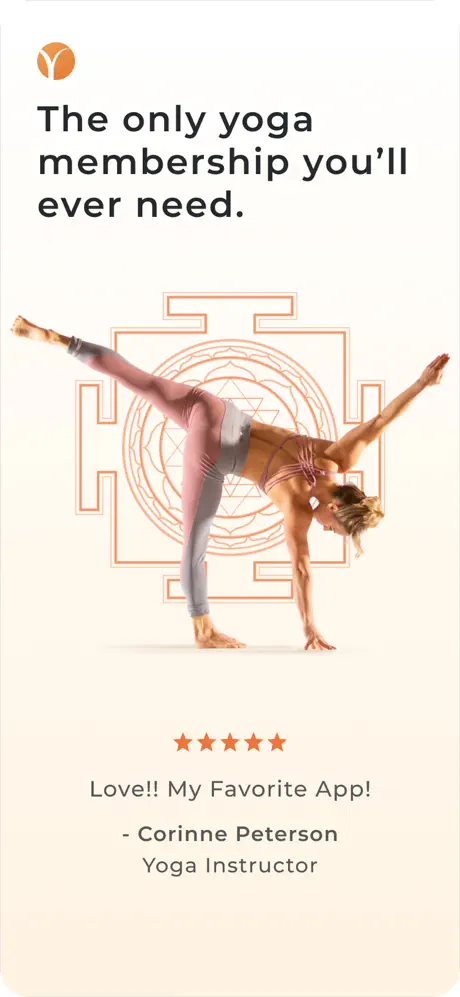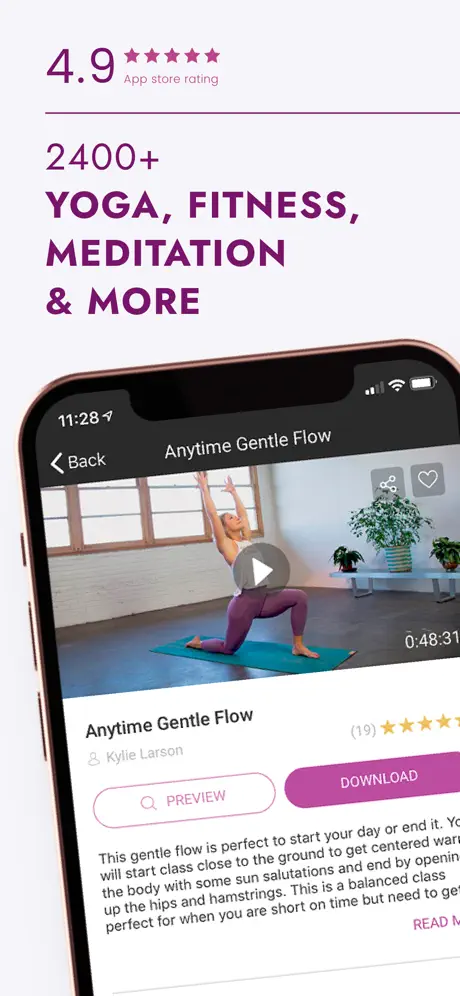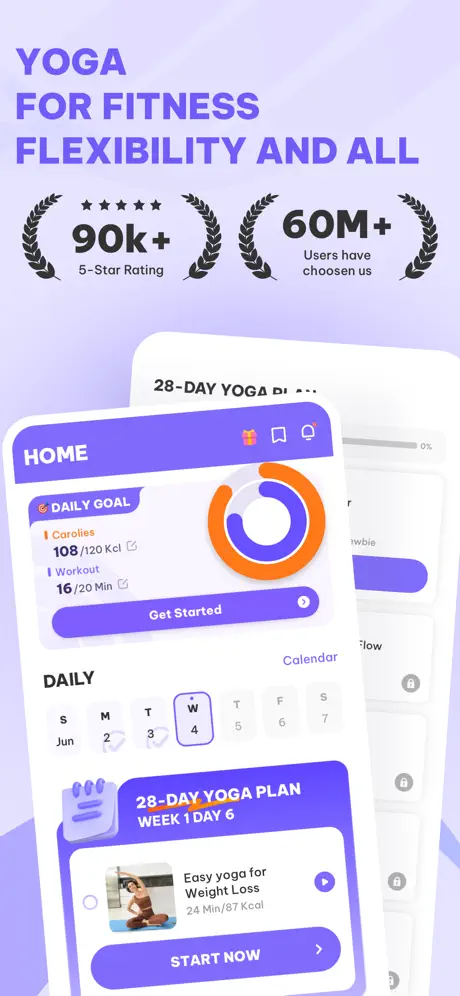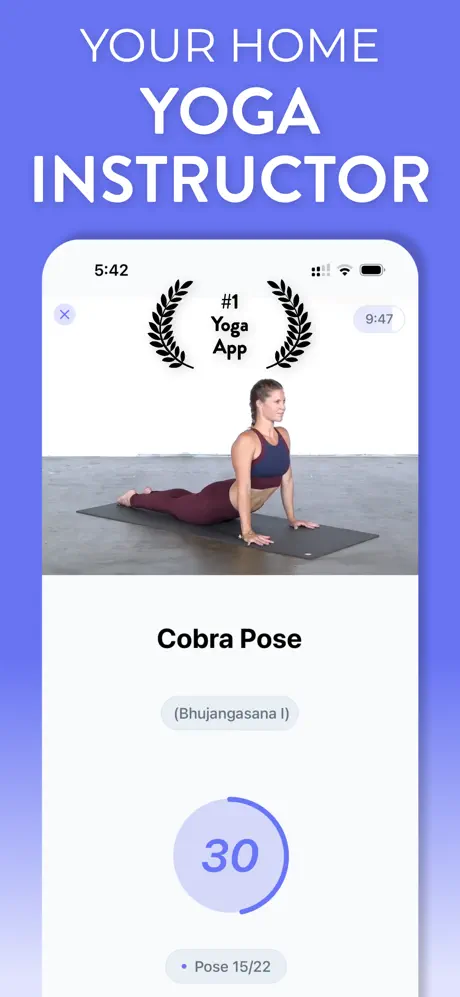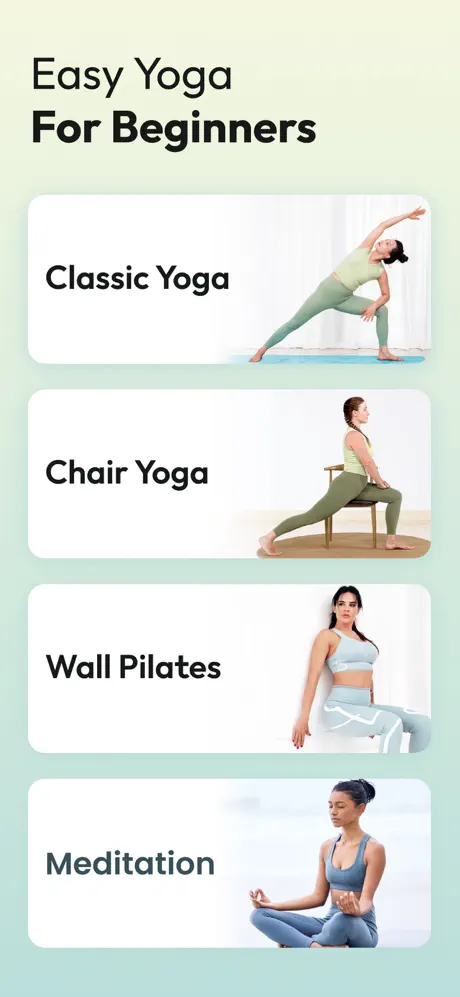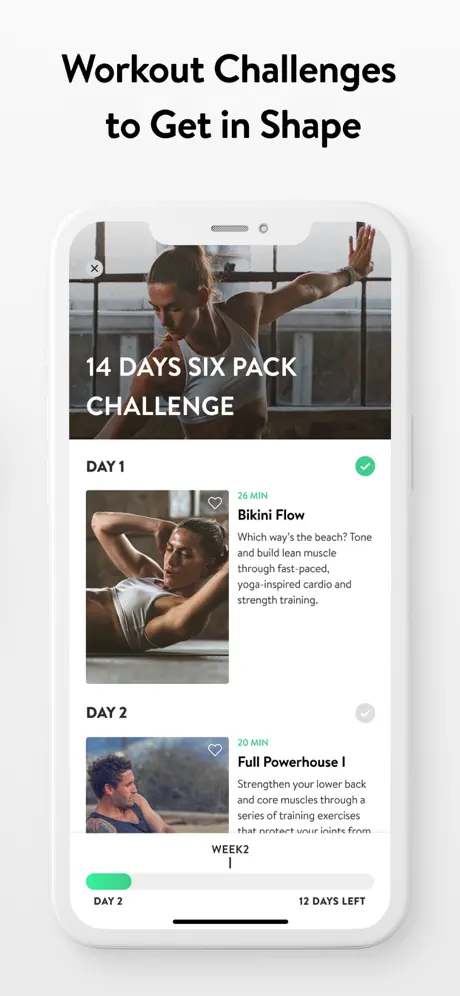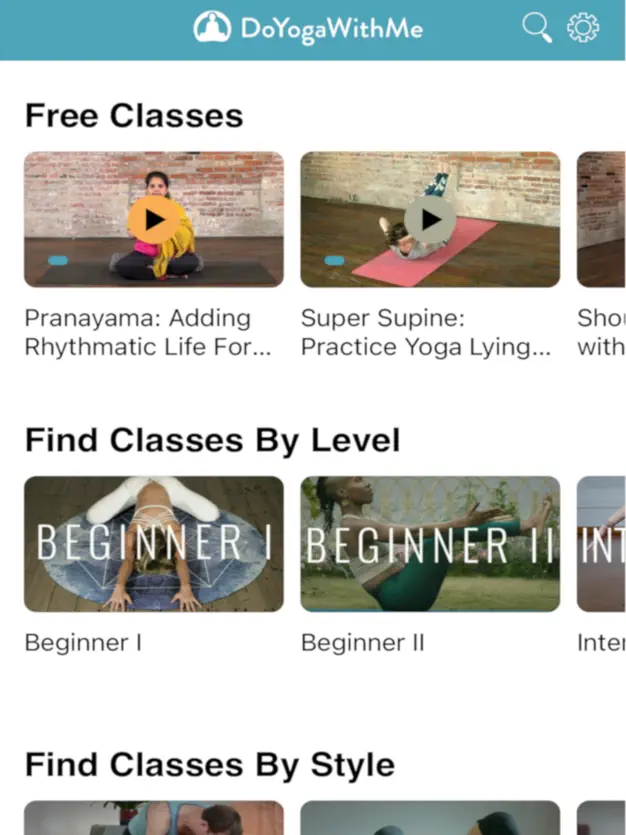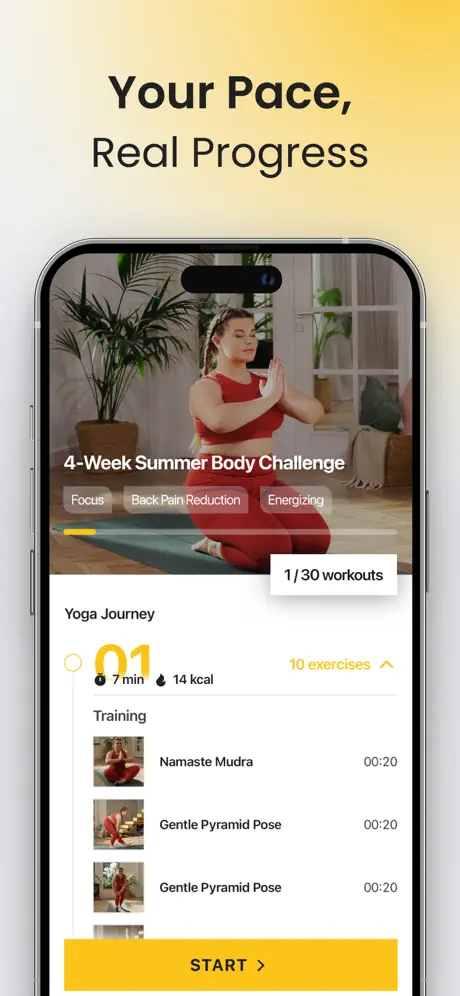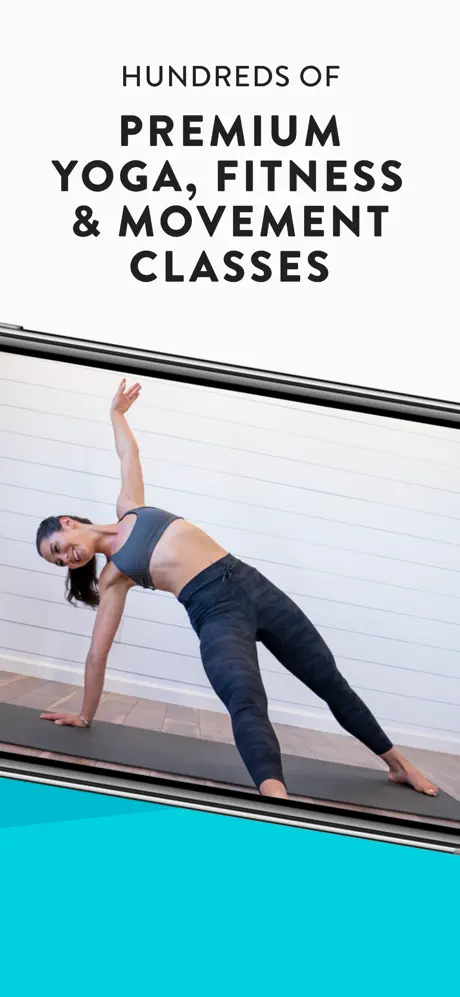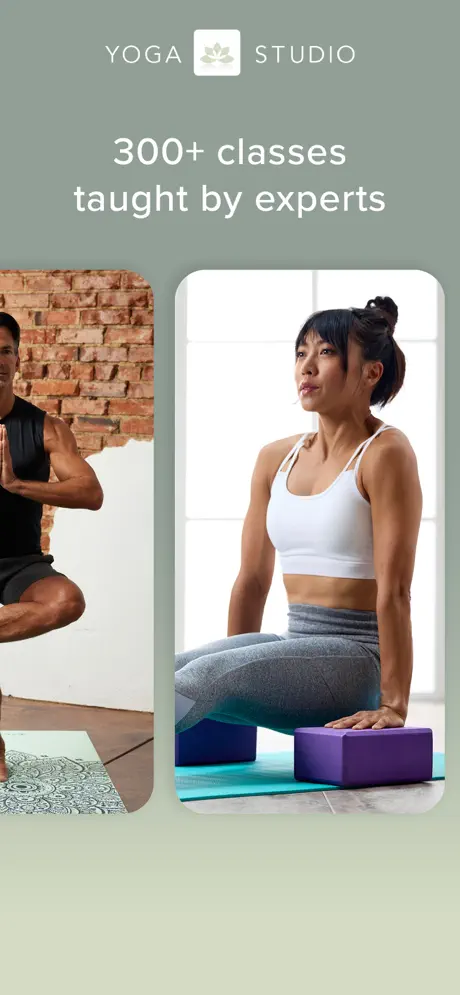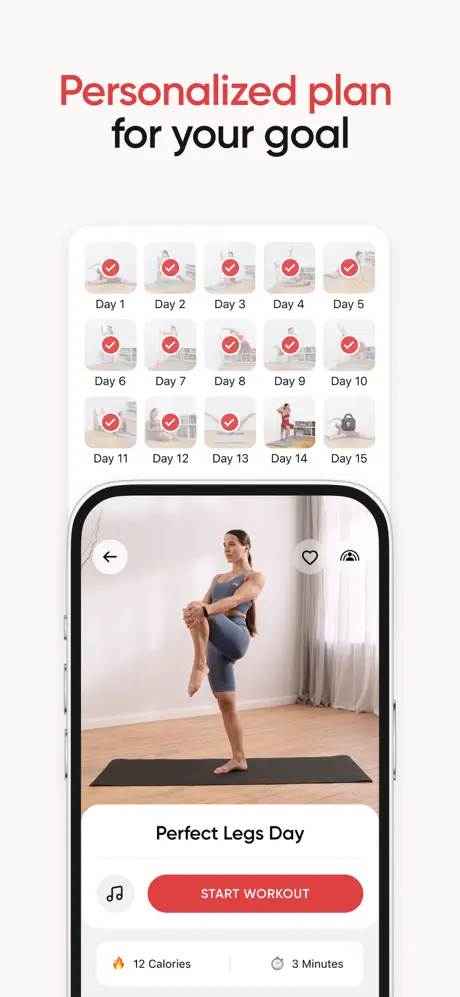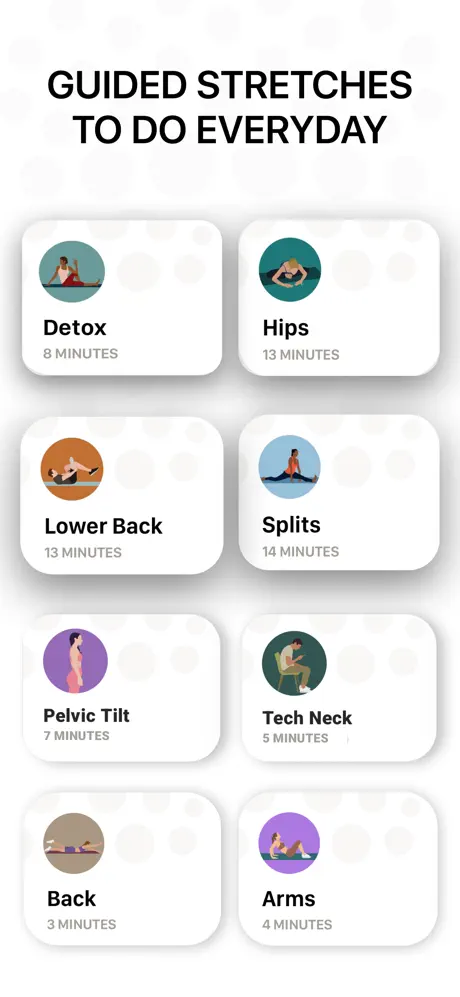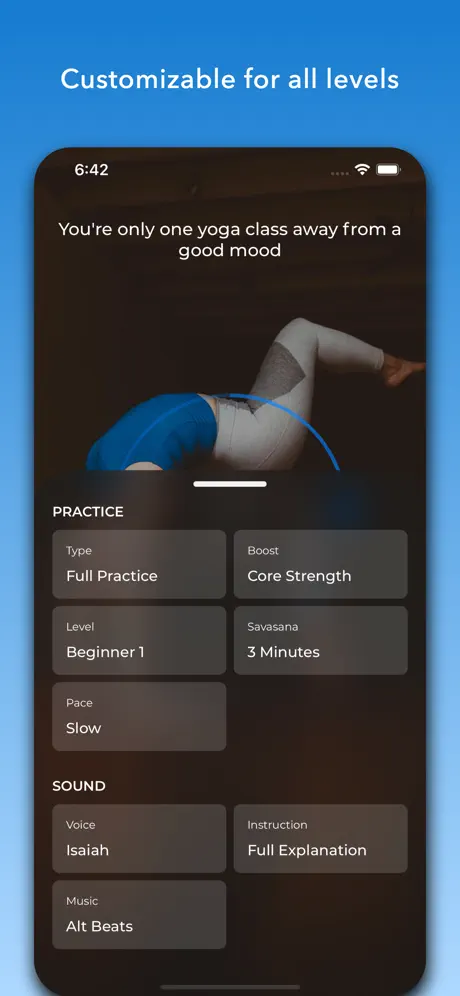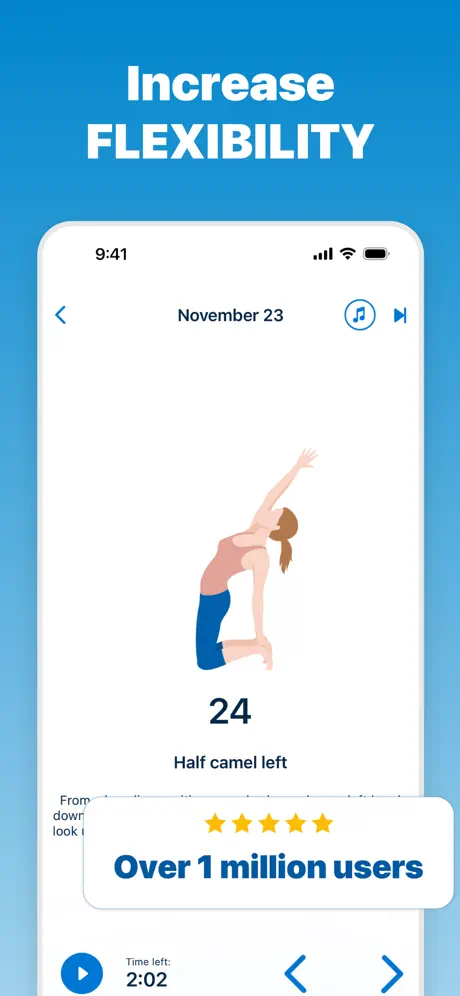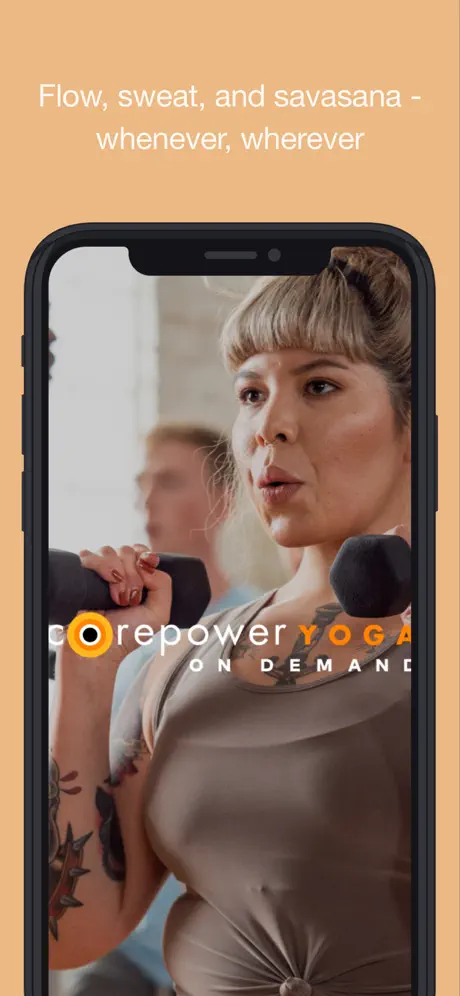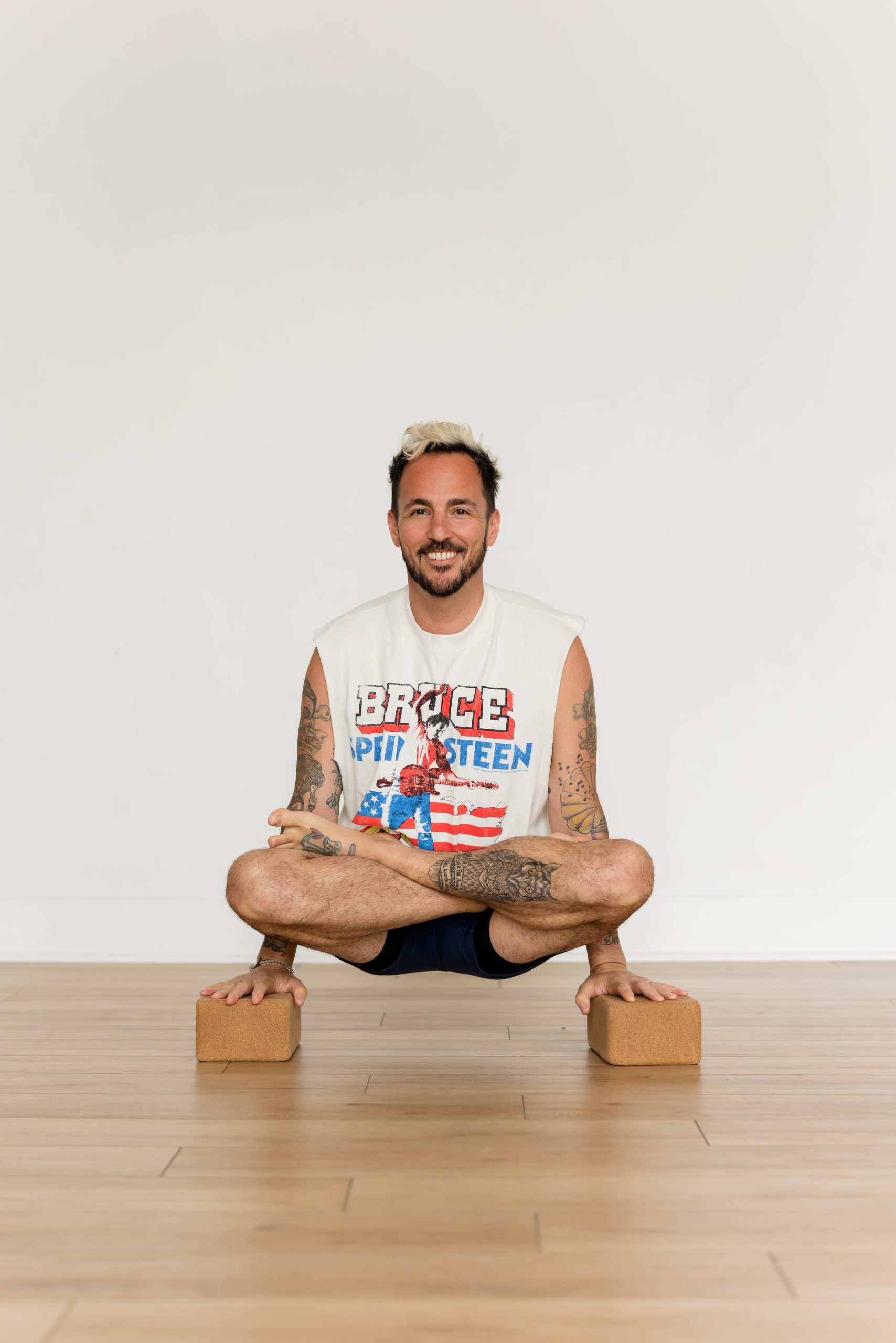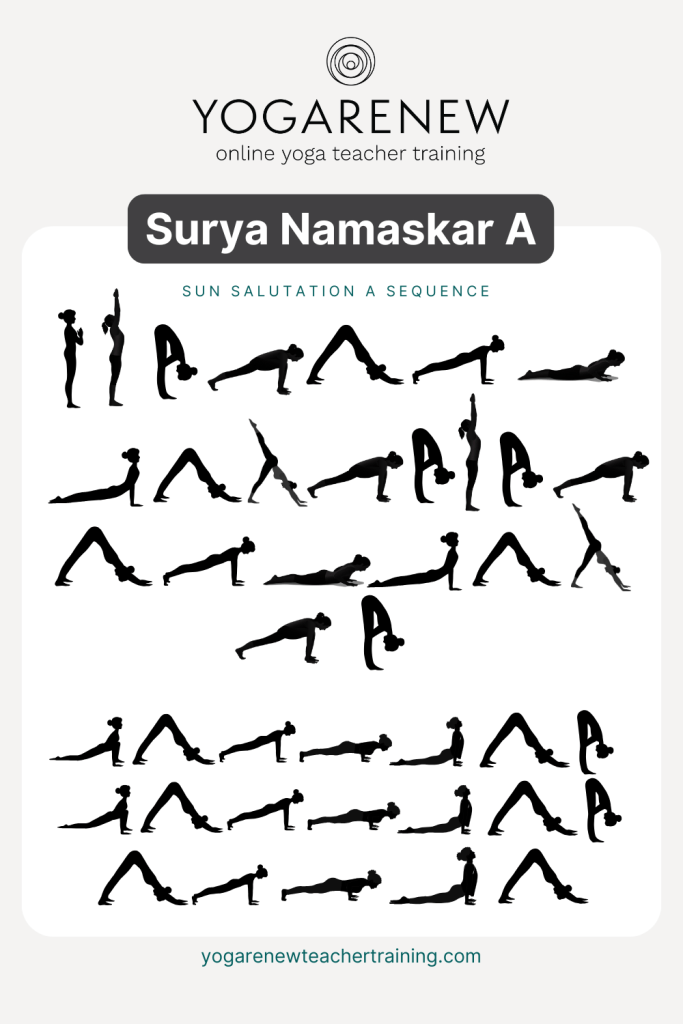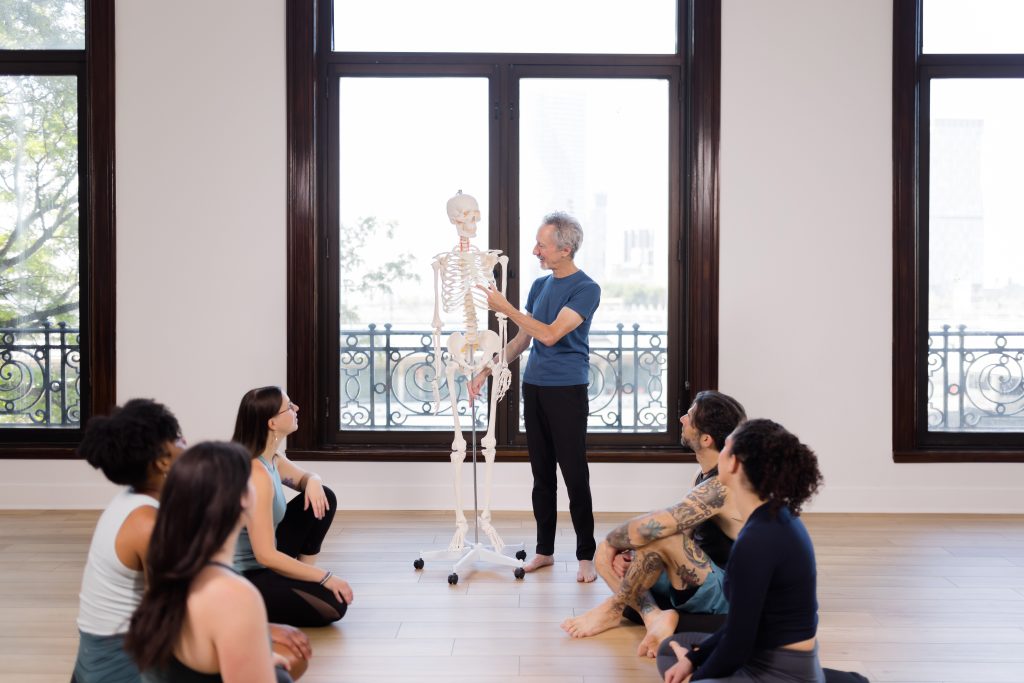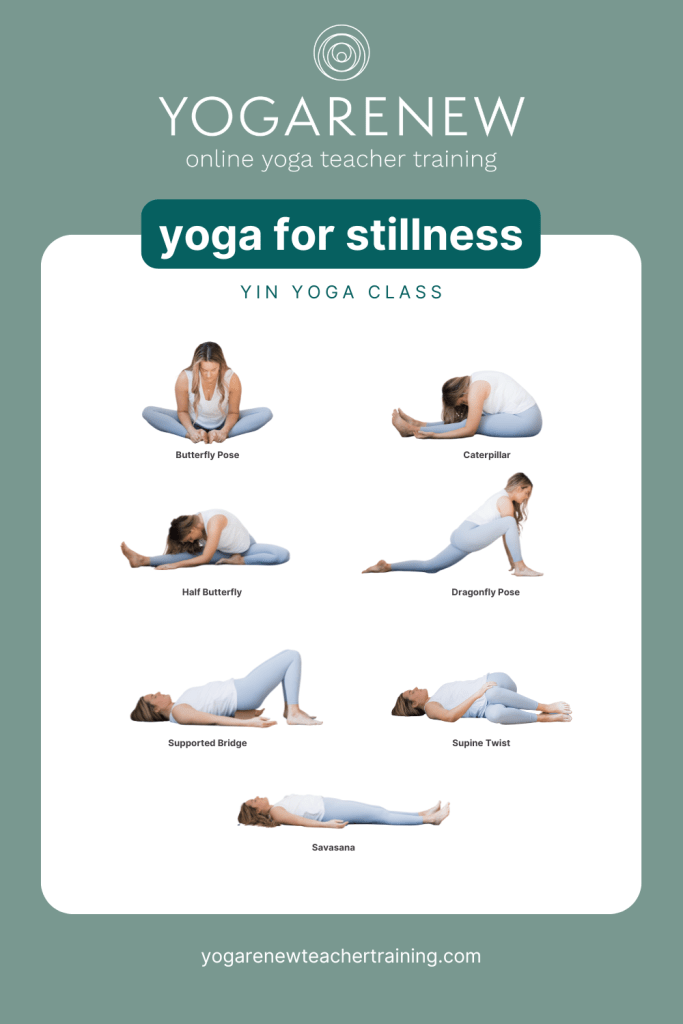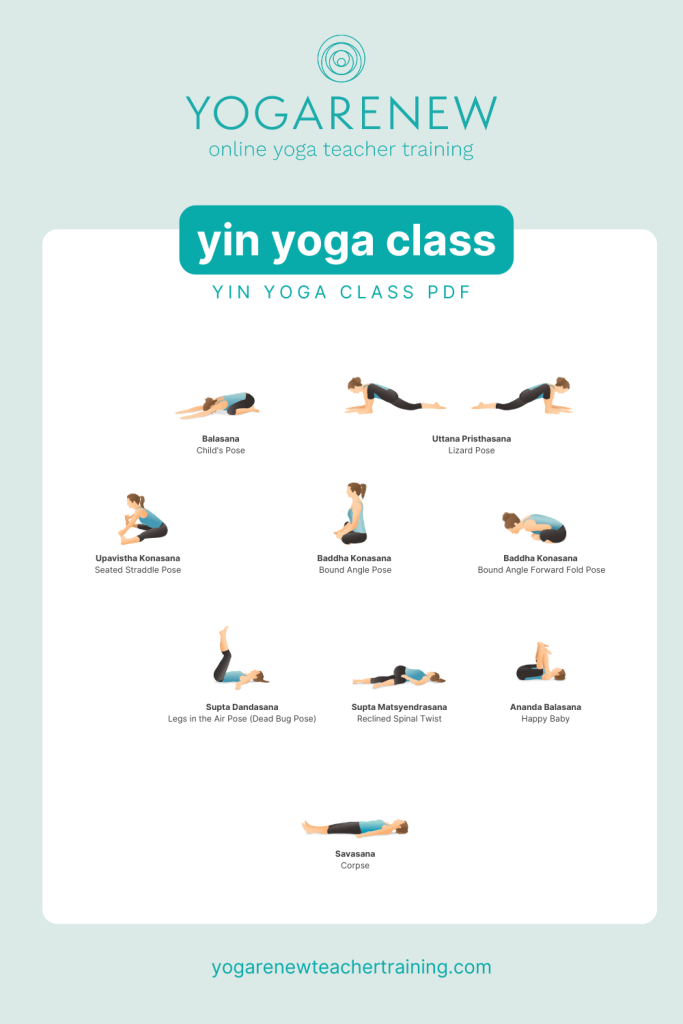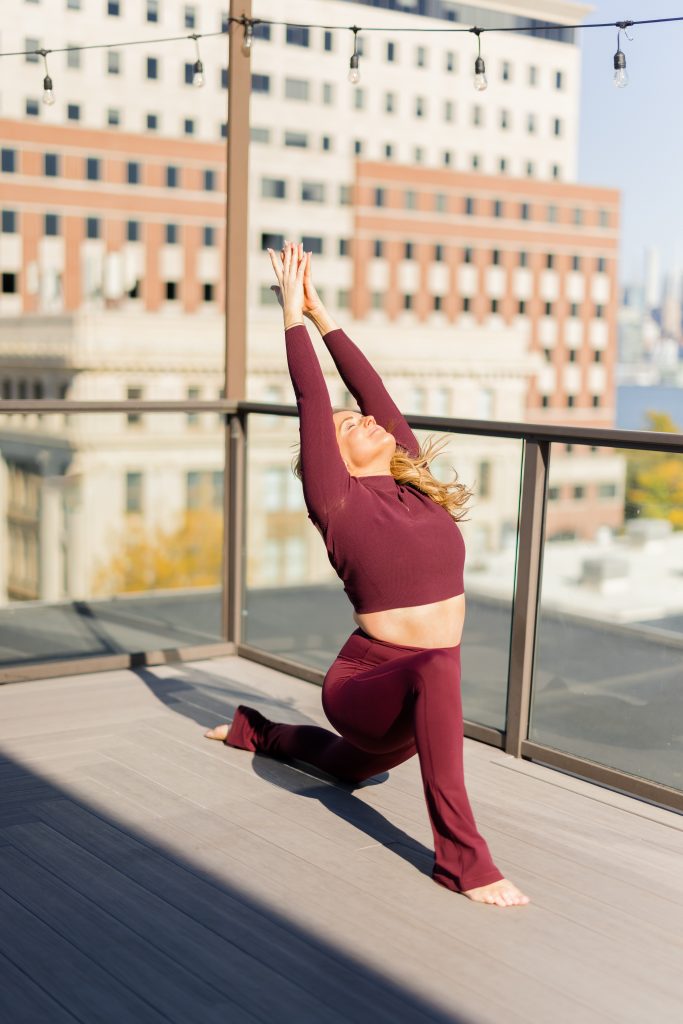I’m always surprised at how many people enroll in one of our yoga teacher training programs because they were unsatisfied with another course they started or completed elsewhere. If you’re looking to become a yoga instructor, do yourself a favor and take a look through this guide first.
Whether you’re looking to teach online yoga classes, in a studio, gym, corporate environment or anywhere else – everything is covered. I promise it will help clear up anything you might be confused about and will save you a ton of headaches so you’ll know exactly how to become a yoga instructor with minimal stress. If you still have any questions by the end of this guide (and we doubt you will) you can reach out to us directly and we’ll get them answered for you. Clear and simple.
The secret on how to become a yoga instructor
There’s a TON of noise out there about becoming a yoga instructor and sometimes it seems like each piece of information conflicts with the rest. It might be poor information, or it might be poor communication but it sure seems like there’s a drought of clarity sometimes. For example, did you know that you actually DON’T need a certification to teach yoga? Probably not, but we’ll explain more on that later. We figured it was time to finally put together a guide on everything you need to know about becoming a yoga teacher. Let’s dive in!
Table of Contents:
- What are the requirements to teach yoga?
- What will a yoga studio look for in a yoga instructor?
- What is Yoga Alliance?
- What is the difference between a 200, 300, and 500 hour yoga teacher training?
- Do I need any prerequisites before enrolling?
- Can I complete a yoga teacher training online?
- How long does it take to complete a yoga teacher training?
- Does a yoga teacher training certificate expire?
- Do I need insurance to teach yoga?
- How much do yoga teachers get paid?
- Is it possible to complete a 200 hour ytt for under $500?
What are the requirements to teach yoga?
In the U.S. and most western countries, there is no ‘accreditation’ or governing body that you need to register with to teach yoga. This also means that you don’t need a specific certification to roll out a mat and lead a class, but don’t roll out that mat just yet.
There’s A LOT of reasons why you don’t see yoga teachers all over town without any training. First of all, most places won’t let you teach without a certificate. You’ll also need insurance for most studios. Even if you teach online or in a park, you are putting yourself in danger without insurance.
Students also want to know that their teacher has been trained properly. A yoga teacher training is more than simply learning a few postures. You learn important aspects of safety, anatomy, business and other areas important for any yoga instructor to have. Without proper training, trying to lead yoga classes isn’t just dangerous for you but it’s dangerous for the students as well.
What will a yoga studio look for in a yoga instructor?
Since the government doesn’t set the requirements for a yoga teacher, it’s really up to a studio to set those requirements. While each studio will have their own hiring criteria, generally speaking, they will want their students to have completed at least a 200 hour yoga teacher training. More frequently, studios are also looking for teachers with a 500 hour certificate.
One helpful tip is that studios will often run their own teacher training programs and look to hire students from within those programs. If there’s a specific studio you’d like to work with, stay late after class one day and ask them what they look for in their teachers. Oftentimes, you’ll hear a studio mention Yoga Alliance – but what is Yoga Alliance?
What is Yoga Alliance?
Yoga Alliance is a registration body for yoga schools and yoga teachers. There are a number of other registration bodies all over the world, but Yoga Alliance is the largest and most common.
As mentioned on their site, Yoga Alliance does not certify schools and they are not an accreditation body like you’d see with universities or in other industries. While they don’t actually certify the schools, they do sort of behave like an accreditation body in some ways. In order to register with Yoga Alliance, you’ll need to attend a training by a school registered with Yoga Alliance and the training will need to be conducted by teachers who are registered with Yoga Alliance.
The way a training will work is that Yoga Alliance has a set of standards that each school needs to follow, and each school will submit their curriculum to Yoga Alliance in order to have their training approved. For example, they will ask for a certain number of hours to be completed for anatomy, practice, or technique, etc. Yoga Alliance has a few different types of registration credentials which are aligned with the way training is typically conducted and you can read more about becoming a yoga instructor on their website.
Yoga Alliance requires a certain level of synchronous learning during a training program. For online courses, this means you’ll need to have a certain number of hours logged over live calls. A 200 hour course will require 30 hours of live calls, so if you are in an online course from a school that only has 1 live call/week you would need to stay in the course for at least 30 weeks to complete your Yoga Alliance requirements.
If Yoga Alliance is important to you, you’ll want to find a school with a lot of calls at times you’re available to attend them.
What is the difference between a 200, 300 and 500 hour yoga teacher training?
I’ve seen many people get confused with these trainings, so let’s clarify quickly: A 200 hour yoga teacher training needs to be completed before anything else. Many people think you can start with either a 200 hour training, or a 300 hour training, but a 300 hour yoga teacher training should only be completed AFTER a 200 hour yoga teacher training has been completed. A 500 hour certification is a combination of a 200 and 300 hour yoga teacher training.
Typically, students will finish a 200 hour course before anything else. The 200 hour program might be focused on a specific area such as Vinyasa, or Hatha yoga or it might be a multi-style yoga teacher training course. If the school is registered with Yoga Alliance, it doesn’t really matter whether there is a specific area of focus for the training. Yoga Alliance will only recognize a ‘200 hour’ training (they won’t differentiate between a Vinyasa training and a Hatha training). Let’s take a look at the credentials that Yoga Alliance uses because those draw up a lot of questions as well.
RYT 200 & RYT 500 (or E-RYT 200, E-RYT 500)
RYT = Registered Yoga Teacher
It is a credential specific to Yoga Alliance and in order to list yourself as a RYT-200 you’ll need to complete a 200 hour yoga teacher training that’s been registered with Yoga Alliance. If somebody is an RYT-500, that means they’ve completed a 500 hour program. Or it could mean that they’ve completed a 200 hour course, and then afterwards they completed a 300 hour course. 200 + 300 = 500!
E-RYT is a newer credential by Yoga Alliance
There is an E-RYT 200 and E-RYT 500 and you become eligible for E-RYT 2 years after completing a training. In addition to completing a training, you will also need to complete 1,000 hours of teaching with a RYS-200 registration. Outside of RYT, you also might see the designation CYT. What does CYT mean? Funny you should ask…
What’s the difference between RYT and CYT?
RYT stands for Registered Yoga Teacher and is specific to Yoga Alliance, while CYT stands for ‘Certified Yoga Teacher’ and is a general designation. If somebody is listed as a CYT-200 then it would mean they have completed a 200 hr yoga teacher training, but they aren’t necessarily listed in Yoga Alliance’s directory.
In short, RYT and CYT are similar except that RYT is for people specifically registered in Yoga Alliance’s directory.
Do I need any prerequisites before enrolling?
No. A yoga teacher training is where you’ll gain a certification, so there aren’t really any qualifications that you’ll need to complete before enrolling. Students will typically come with quite a bit of experience, though.
A 200 hour training is not a walk in the park, so it’s good to have a sense of what you love about yoga and what you’re looking for out of a training before you commit to one. That will be helpful for you to determine which course is the best for you.
A lot of times, teacher trainings are broken out by the specific amount of hours it takes to complete the course, or they’re focused on a specific genre, or type of yoga. Here are some examples of teacher trainings and they all are completely separate (you don’t need to complete one before advancing to the others except going from your 200 hours to your additional 300 hours).
Can I complete a yoga teacher training online?
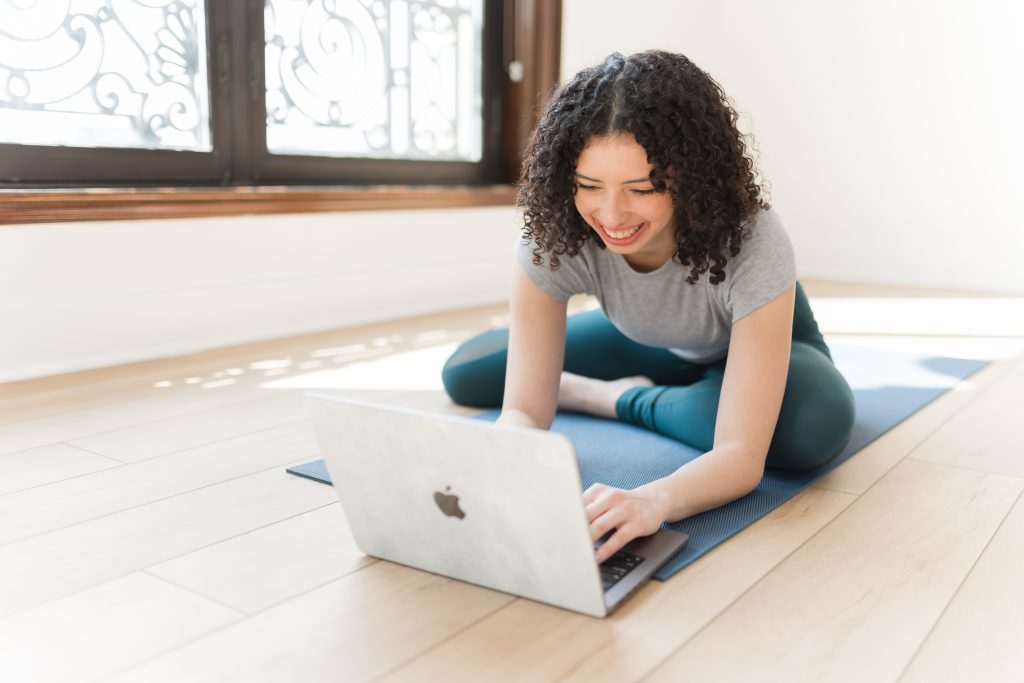
The first step towards becoming a yoga instructor through an online program is doing your research!
Yes, you can! Even before COVID-19, schools like YogaRenew had conducted yoga teacher trainings online.
200 hours engaged in a training is a large commitment. Most people can’t realistically complete such an extensive and long course unless it’s self-paced and online. This allows students to work at their own pace in between work, children, and other responsibilities.
Many people also live in remote locations, making attending an in-person training difficult. They also may be in an area where yoga isn’t as popular, so there are no “in-person” studios. Online training has solved both of these problems, making it more accessible than ever. Having the ability to access a yoga training from wherever, whenever is a subtle luxury that accompanies online yoga teacher trainings.
What’s the difference between an in-person yoga teacher training and an online yoga teacher training?
There’s going to be quite a few differences between attending a training in-person and online. Each will have pros and cons also. Every studio will have their own format and structure but we can provide some general insight based on the format of online vs in-person training.
An online training will typically provide much more flexibility because you will often have recorded material that you can review at your convenience in addition to any live or in-person sessions. Sometimes, you’ll even have lifetime access to all the recorded material. Many schools will have a limit on how long their students can access the content, so double check with the school first.
An in-person training is going to have a much different interaction than an online course, however. You can imagine that the way you’d interact with somebody in person is going to be different than the way you’d interact with them online. The same applies for a yoga teacher training. Both an online training and an in-person training should have live interaction with the trainers so that you can gain feedback from the instructors and ask questions through-out the course. If a training does not offer interactive elements and feedback from the instructors, it’s a red flag.
Online and in-person trainings can have a social element, but, as we’ve discussed, each is handled a little differently. Online trainings might have social elements during live sessions as well as through online groups, study buddies, and social media. In-person trainings will not typically offer online groups, or social media interaction since all of the interaction is handled on-site. It can certainly be helpful to have the online resources so that you can come back to them after completing your training, (again, double check whether the studio provides lifetime access to the material).
7 things to look for in an online yoga teacher training
There is a multitude of aspects to consider when selecting which online program to sign up for. Hopefully the considerations below can help prevent some headaches for you so that you know what to look for with an online yoga teacher training.
Here are a few items you’ll want to evaluate before enrolling in an online course:
- A proven program: Most schools should have some feedback or testimonials from their students. This gives you a good sense of whether it’s a good program for you. If the school is registered with Yoga Alliance, students will provide a review on the YA site when they register their certificate. The yoga instructors should have years of experience teaching as well. Take a look at the background of your instructors before enrolling. Each studio will have different trainers and styles of yoga. Find a studio with instructors that align with your interests.
- Teacher feedback & interaction: Whether the school is online or in-person, you’ll want to join a course that has some feedback and interaction between the students and teachers.
- Live calls: In addition to feedback, you’ll also want the opportunity to join live calls with the instructors. Some online schools will have calls that you can attend at different times so that you have flexibility to work at your own pace but the availability of live sessions. For a 200 hr course, Yoga Alliance requires 30 hours of live calls. If a school only offers 1 or 2 calls/week it could take a very long time to complete those requirements. We offer around 30 live calls each week in our 200 hr course from experts in different areas like anatomy, philosophy, business, class management, sequencing, etc. We also have recordings that students can watch if they miss a live call as well. Some studios will have ‘office hours’ which is nice, but different from live training where you can actually ask questions on the spot as the training is being conducted.
- Community: One thing that’s important for me is to drive the sense of community in our training programs. Live calls definitely help with this, but our groups are where people really connect with each other. Either way, becoming a yoga instructor is an exciting journey and a big commitment. You’ll want to experience it with other people in a community setting. Find a course that offers an active community that you can stay with even after the training is completed.
- Accountability: With more online training programs becoming available, accountability has become more important than ever before. You need to know that you’re on the right track, and that you’re actually learning. I’ve seen students come into my studio quite confused after attending a training that didn’t have any accountability. Testing and feedback are important ways to stay accountable. Testing isn’t just about memorizing information and passing a quiz. You have to also make sure to give each student feedback on how they cue and run their classes.
- Resourceful information: One of the major benefits of attending an online training is that you can gain access to a TON of resources. I’d suggest finding a course that gives you lifetime access to the resources, but you also want to make sure that you have some good material that you can take with you into your training.
- Support: This one is obvious, but it’s a good idea to test out support with a school before enrolling. It might be as simple as sending over an email to see how quickly you get a response. Email support is really the bare minimum you’ll want to look for though. For example, we offer our live calls for students to interact in real time, and our community provides a place for students to connect locally or online. We provide a place for students to connect with each other to form ‘study groups’ as well. Feedback is provided to each individual as well. General feedback in a group setting is nice, but individualized feedback is even better.
Research the company online
A great online teacher training will be continually adding new resources into their training programs, so even if you graduated a couple years ago you might still find some helpful sequences or resources that you can bring into the classroom as an instructor.
Here’s a short video we created for when it does come time to start teaching your own classes:
For additional information, you can check out this article: What To Look for in a Yoga Teacher Training
Be sure to also check out articles that help you weigh different online yoga teacher training prices and options: Best Online Yoga Teacher Training Programs
How long does it take to complete a yoga teacher training?
Well, a 200 hour yoga teacher training should take 200 hours and a 500 hour program is the accumulation of the 200 hours and the additional 300 hours in the next program. In-person training courses will typically have a start date and end date. Online programs will usually allow students to work at their own pace but some might have a start date and end date. Self-paced schools sometimes have an expiration date as well.
Students enrolled in our courses have lifetime access to all of the material, and we don’t charge anything if it takes a little bit longer for somebody to finish a course. Some students might take 40 days and others might take 400 days to go through a 200 hour program online. It really depends on how much availability you have and how quickly you’re able to work through the material.
Does a yoga teacher training certificate expire?
A yoga teacher training certificate will not typically expire. While we can’t speak for every school out there, it’s rare to see certificates that expire. Once you complete a 200 hour course, you have a 200 hour certificate. It is like a college degree, you’ve earned it and it is yours to keep!
Once you complete a 500 hour course, you have a 500 hour certificate. While your certificate probably won’t expire, there are options for continuing education. Yoga Alliance and certain registration bodies have some continuing education requirements to encourage ongoing learning. They’ll ask you to take continuing ed classes to stay registered with them but you don’t technically need to register with Yoga Alliance in order to teach. Most studios will be okay with hiring you if you’ve already completed a 200 or 500 hour training.
Do I need insurance to teach yoga?
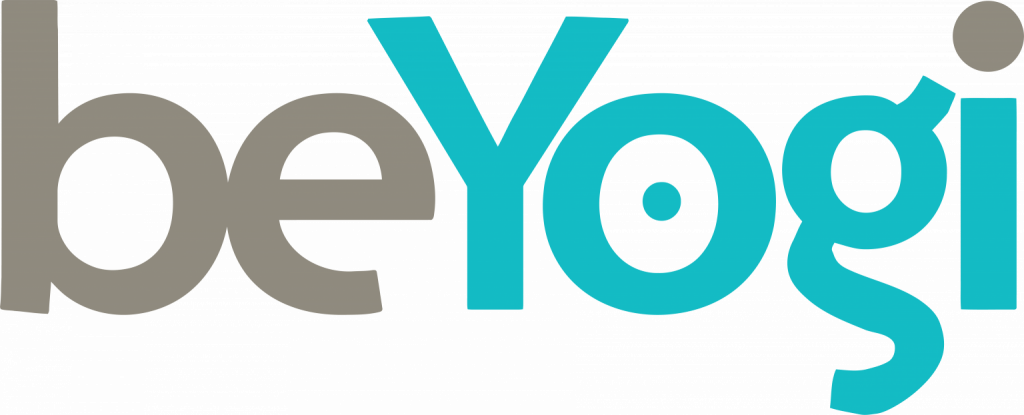
beYogi is the most well-known yoga insurance program
Yes, insurance is critical for any yoga instructor. First of all, you’ll need insurance to teach at any physical location. At a yoga studio, the teacher will be the one who purchases the insurance. A yoga studio will have their own insurance, but typically they’ll require teachers to bring their own insurance as well. This puts responsibility on the teacher to ensure that the class is conducted in a safe manner. Even if you want to rent your own room, the building will typically ask to see some insurance in order to use the space. This is to protect themselves from lawsuit and is standard.
We have a partnership with BeYogi insurance for our students to gain insurance at a discount. Studios will often have some insurance that they offer to their students or graduates that makes it easy to find a provider.
How much do yoga teachers get paid?
Yoga teachers are compensated in a number of different ways, but in a studio setting there are usually a few different ways that teachers are compensated. They might be compensated a flat rate, a flat rate plus an additional rate per student, or they might simply be paid a flat rate per student.
If you’re interested in learning more about yoga teacher compensation and how to earn money as a yoga instructor, check out our blog: How Much Do Yoga Teachers Make?
Is it possible to complete a 200 hour ytt for under $500?
Yes. Online training has enabled students to become a certified yoga instructor for decent prices and there are some incredible courses at great prices now. I’ve seen plenty of students spend thousands of dollars and attend a training they were unhappy with, so price is not always an indication of quality.
A yoga teacher training is incredibly important, so you don’t want to sacrifice quality – and you don’t need to either. Make sure that there are regular zoom or live sessions that you can attend to interact with instructors. You should be able to ask questions, get feedback, and have trainers available to interact with.
Good schools will have some reviews and testimonials on trusted sites, like TrustPilot, that you can check out before you enroll also.
In conclusion (and don’t forget your FREE guide!)
Do. Your. Research. The more you know before jumping into any yoga teacher training, the better prepared you’ll be. The yoga sphere is constantly shifting as well, so staying up-to-date with resources and information will be extremely helpful on your journey towards potentially becoming an instructor.
Download Your Guide!
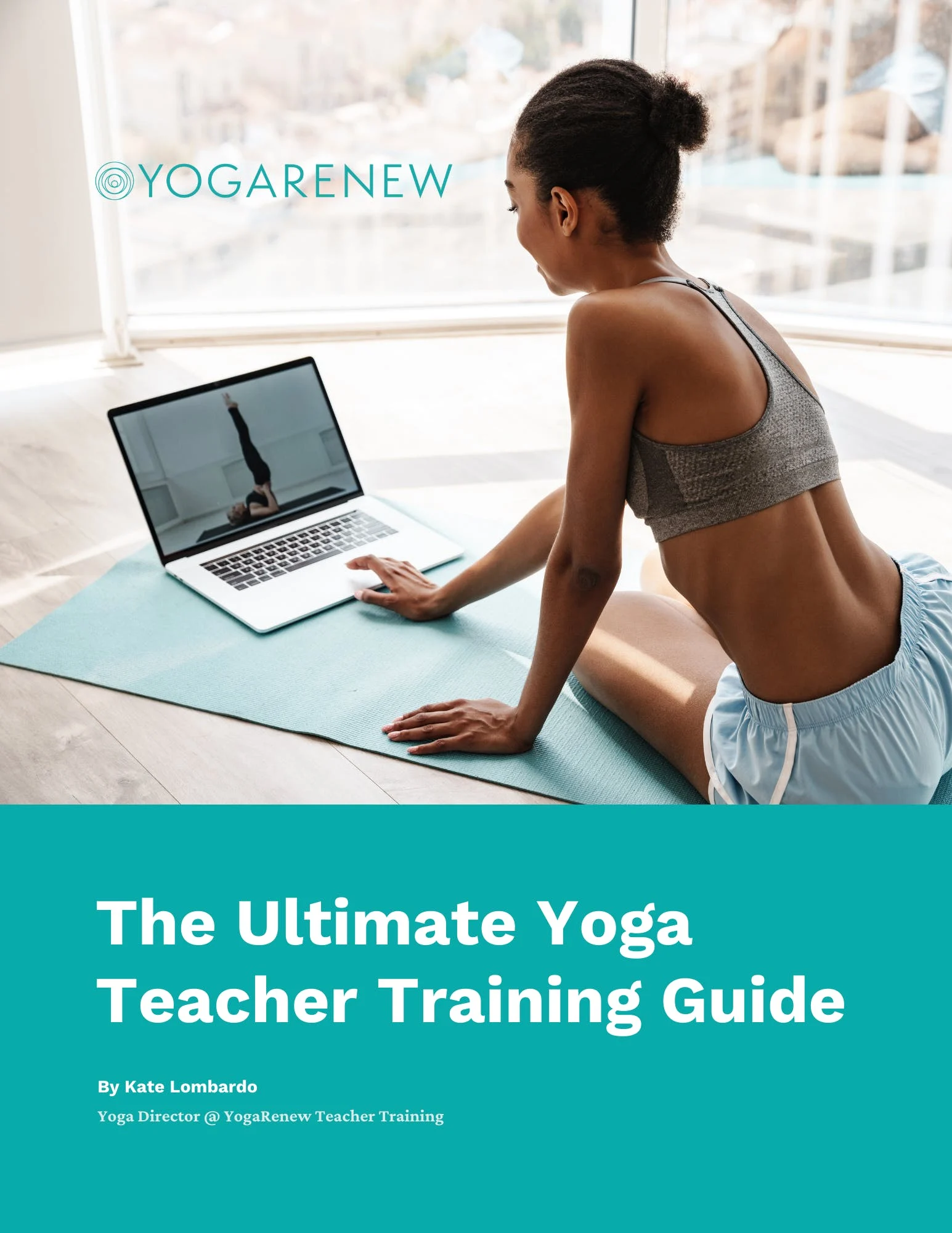
Frequently Asked Questions
What are the steps to become a certified yoga instructor?
Start with a consistent personal yoga practice → choose a yoga style → enroll in a teacher training (like a 200-hour YTT) → complete training (anatomy, philosophy, teaching methodology) → practice teaching → register (e.g., with Yoga Alliance) or teach independently.
How much does a yoga teacher training cost?
It depends on the school and format. Online 200-hour yoga teacher trainings typically range from $300 to $3,000+, depending on inclusions (live coaching, mentorship, materials, etc.). (Note: adjust with your real pricing.)
Do I need prior yoga experience to join a 200-hour teacher training?
Not necessarily. Many programs welcome beginners who have a regular personal practice. However, some familiarity with basic yoga postures helps.
How long does it take to complete a 200-hour yoga teacher training?
It varies. Some trainings run full-time (intensive over a few weeks), others are part-time or self-paced over several months. Online courses often span 3–6 months, depending on how you schedule.
Is an online yoga teacher training as good as an in-person one?
Yes — if it’s well structured. Quality online YTTs include live sessions, video lectures, mentoring, assignments, and practice teaching. They can be equally recognized, especially if Yoga-Alliance approved.
What is Yoga Alliance, and do I need to register with them?
Yoga Alliance is a widely recognized organization that sets standards for yoga teacher training programs (e.g., 200, 500 hours). Registering as a Registered Yoga Teacher (RYT) can boost credibility, help you get studio teaching gigs, and be valued by students.
What topics are covered in a 200-hour yoga teacher training?
Common curriculum: yoga philosophy, anatomy & biomechanics, alignment & posture, teaching methodology, sequencing, adjustments, pranayama (breathwork), meditation, teaching practicum, ethics.
Can I teach yoga professionally after a 200-hour certification?
Yes. A 200-hour certificate is the most common entry-level credential for teaching yoga. After certification, you can teach in studios, gyms, community centers, online, or offer private classes.
Should I continue with more training after the 200-hour course?
Many teachers choose to deepen their knowledge via a 300-hour or 500-hour YTT, or specialize in areas like prenatal yoga, yin yoga, trauma-informed yoga, meditation, etc.
Do I need business skills to be a yoga instructor?
Yes — to run a sustainable yoga teaching practice, you should learn basic marketing, client management, pricing, insurance, and possibly how to run retreats or workshops.



